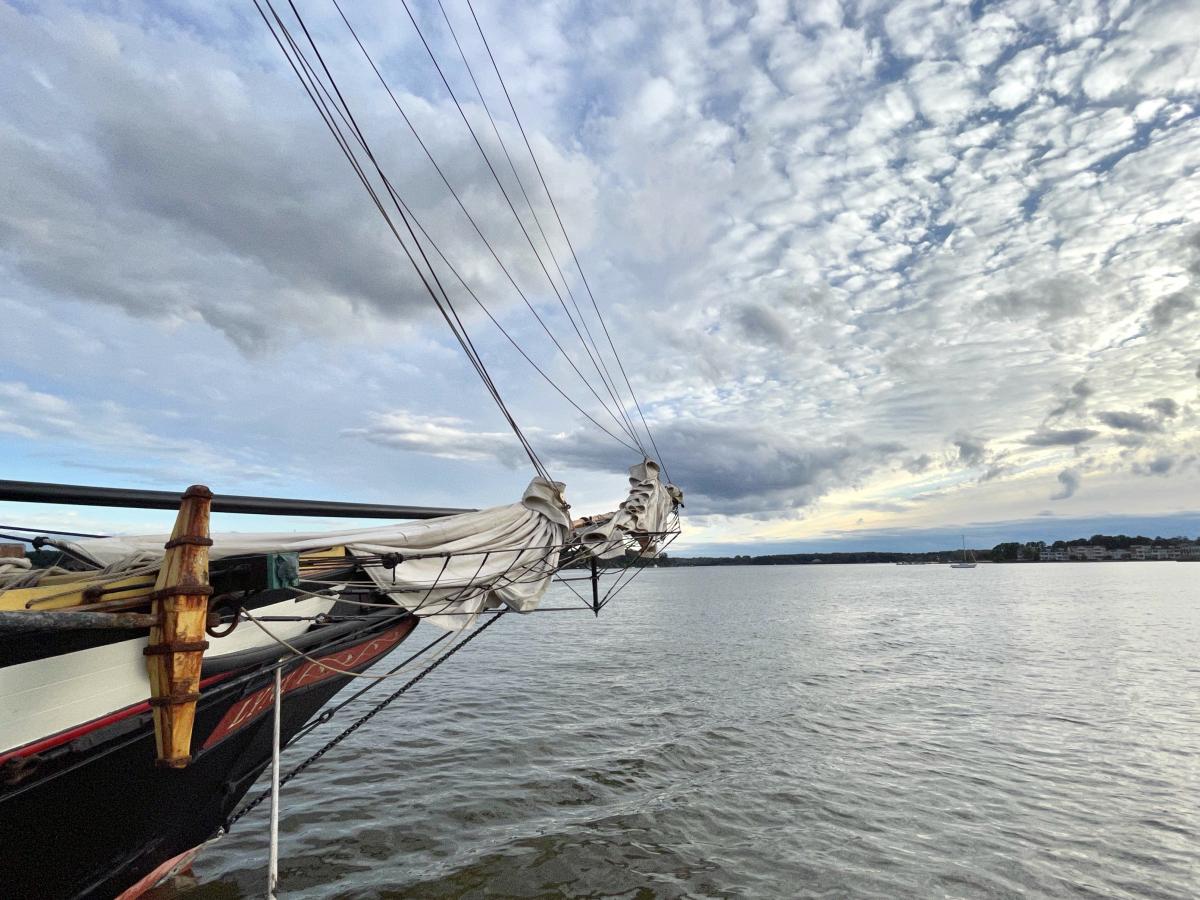From a source unknown to an end unseen: water, like life, flows downhill. The wind may change, the tide may flood, but in the end, what began as a tiny rivulet will ultimately become part of a vast ocean. So don’t fret too much; just go with the flow.
I try to remind myself of this truth every night before I fall asleep. I know the world is too much with us late and soon these days, but why waste our powers on elements we can’t control? Don’t get me wrong: we can always be kind; we can still strive to do better; we can respect science; we can even hope to make a difference—a good difference—in a seemingly indifferent world. But as Norman Maclean so gently reminded us “Eventually, all things merge into one, and a river runs through it.”
I’m now at that place in life where I’m trying my best to discern what lies downstream. But alas, there are too many bends in the river, and I can’t foresee all that is to come. Maybe that’s for the best because if I knew where all the rocks and shoals lay, I might forego the rest of the journey. No; better to ease off a bit and make my way carefully, always doing my best to keep my keel in the deepest part of the channel. After all, at this stage of the game, a slow drift is better than a fast forward, but then, I never was a hare; I was happy enough being a tortoise. I guess I’m more prone to Huck Finn on his raft than to a blue-water sailor on a keelless AC75 flying over the waves at three times the speed of the wind.
Plus, I like the view downstream: to see where I’m headed, as well as to look back at where I’ve been. I’d like to think that where I’ve been informs where I’m going, but you never know. I’ve learned the upstream topography pretty well, but that doesn’t necessarily translate into a knowledge of what lies ahead, around all those downstream bends. I pray the lessons of the past will make me a better sailor, better able to navigate the chutes and rapids still to come, but we’ll see. This I do know: I’ll give it my best shot.
I’m both afraid of, and hungry for, the future. There are graduations and weddings to attend, yet at the same time, I know the sand is running through my hourglass, as well as through those in the hands of people I love. I’m headed downstream in a slow dance with time.
Downstream remains a mystery, just as it should. If we knew the full might and course of the river, we might rue the beauty of the ride. Just as I remind myself of this every night, so do I awake with wonder about what the new day will bring. That feeling can be fearful or joyous, exciting or boring. Only the hours of each new day, each new river mile, will tell.
So be prepared. Be vigilant. Anticipate, and, when necessary, persevere. Hope for the best, plan for the worst. Be ready to reef sail, change course, and adapt to new conditions, new currents, new winds. You’ll be just fine if you keep heading downstream, always doing your best to chart a prudent, thoughtful, and caring course.
I’ll be right back.
Jamie Kirkpatrick is a writer and photographer who lives in Chestertown. His work has appeared in the Washington Post, the Baltimore Sun, the Philadelphia Inquirer, the Pittsburgh Post-Gazette, the Washington College Alumni Magazine, and American Cowboy Magazine. Two collections of his essays (“Musing Right Along” and “I’ll Be Right Back”) are available on Amazon. Jamie’s website is www.musingjamie.com




Paul Rybon says
I liked this article. No sign of an agenda nor axe to grind. Sail on, Jamie.
W. R. ("Nick") Carter, III says
No, Jamie, don’t always try to keep your keel in the deepest part of the channel. Come downriver in a flat bottomed skiff, and at any bend where you can see the banks well enough, pull over to them and enjoy the other features of the meander besides the deep water. Look at the flats, the point bars , reaching out from the inside of the bend, then on the outside of the bend, see see how the underwater contour continues the quick dropoff of the bluffs where the river is migrating towards the hillside. In the smaller tributaries, see how the fallen trees are making snags that places where the fish hang out. See how the river, like the watershed upslope from it, “tries” to slow down the discharge of the land’s chemical elements-and-compounds nutrients for the soil to the Bay. See how so much of what we have done acts to contravene the best of what “nature” knows what must be done.
Nick Carter
[email protected]
Jamie Kirkpatrick says
Thank you, Nick; I appreciate your comment. I’ve spent many happy hours in my cedar and canvas canoe, a 16′ foot “Bob’s Special.” Many of those hours were on Canadian lakes, small streams, and quiet backwaters, all of which is to say, I take your point. But now I’m not so sure I have that kind of time–time to meander, float, and explore beaver lodges and lily pads. It’s time to continue my journey, so I’ve got to keep heading downstream. Thanks for good, close reading!